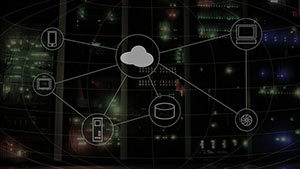Experience Rapid Application Recovery in Cloud Computing through DRaaS aka Disaster Recovery as a Service

But no matter what, businesses needs to keep running and should have enough preventives to deal with such episodes. DRaaS, which stands for disaster recovery as a service, can effectively help you under such incidents.
How is DRaaS helping?
Provided by third parties, DRaaS provides sufficient backup for mission critical systems and applications in case of disruptive occurrences. Whether it is a physical or virtual server, the chances of data being vulnerable in either of events are greater. Small-to-medium sized businesses are at greater advantage as they need not maintain their own DR environment.
DRaaS replicates the cloud data to a new server in the event of failures to avoid any kind of interruptions. Not only this, but the customers can even get the option to select the set of data that needs to be saved.
Cloud Storage Vs Cloud Backup
Lots of people are bound to get confused with these two words. A simple explanation can make them clear, so let us go through each of these terms and get over it.
Cloud Storage– There is a complete misconception that cloud storage provides complete data recovery. Well, it is obviously wrong, because of the capacity limit. This is meant for file sharing or editing and cannot be dependent for backing data. Under this concept, one should know that only a limited amount of data can be retained, and not the whole lot.
Cloud Backup– Here there is no room for the word limited files, because, it is meant to give a complete backup. Through this backup feature it is possible to automatically save the data which is stored in virtual/physical servers and applications. Anytime, anywhere, that is what the cloud backup tells to its users. Also, one of the interesting facts about cloud backup option is the data is encrypted and compressed to ensure easy and secure access.
The Bottom Line
A proven method which promises to provide a complete back-up in the worst-case scenarios, DRaaS, makes data maintenance a breeze for the organizations. Apart from these services, DRaaS is also perfect for business environments with changing requirements.



 +91 8277203000
+91 8277203000
